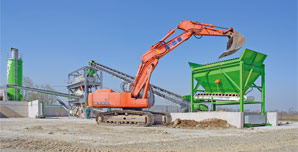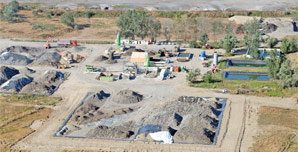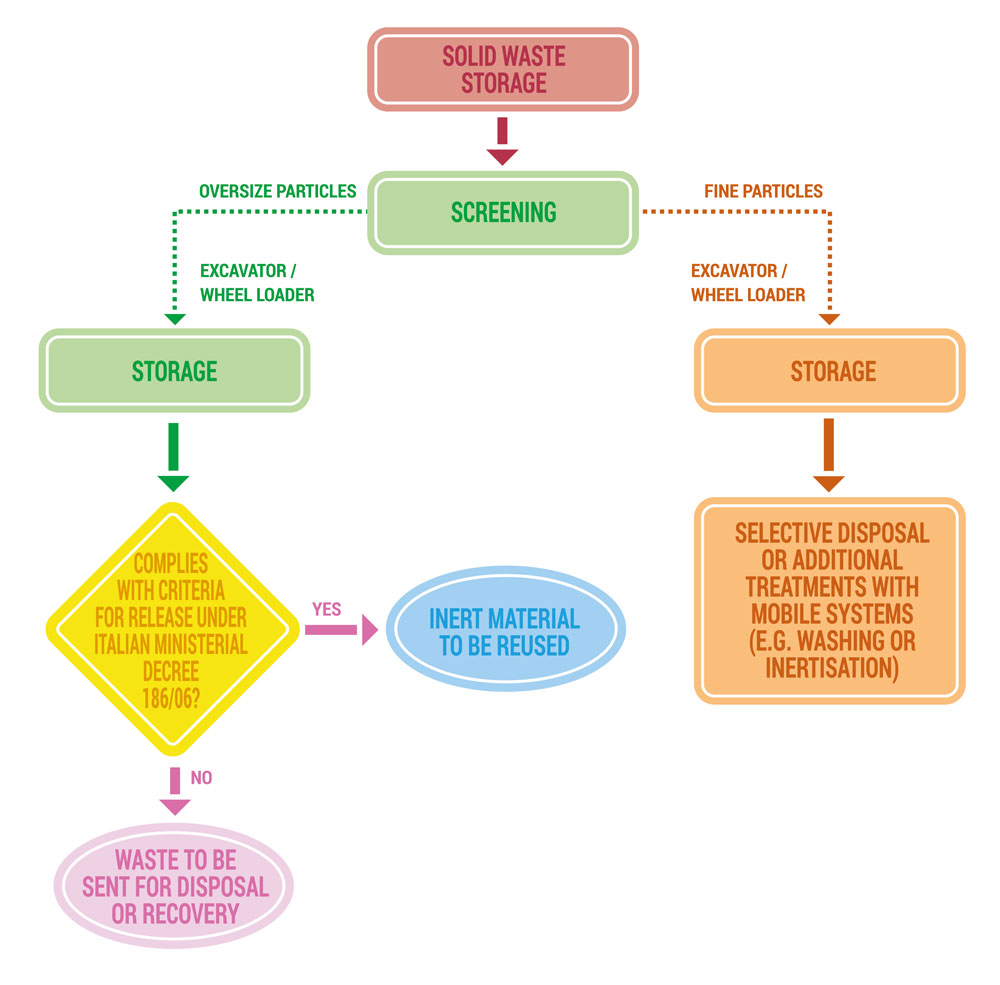Any inert material separated out can be treated as a product and reused within a variety of production cycles or as backfill, provided it meets the criteria for release as established by Italian Ministerial Decree 186/2006; otherwise it is coded with an appropriate EWC and treated as waste.
Riccoboni has many mobile screening systems authorised for treating waste, designed and built in different ways to be used for specific operations. Using the systems we have available, we can sift using rotary screens (trommels) or inclined vibrating tables, separating out up to three sizes of granules, generally between 5 and 200 mm, simultaneously.
Each granulometric fraction is handled base on its physico-chemical characteristics and its degree of contamination.
By separating the soil into three distinct granulometric fractions, the sifting process allows each fraction to be subjected to a different treatment phase or sent directly for disposal/recovery following its chemical characterisation, in accordance with the law in force. This ability to subject each fraction to a specific treatment phase calibrated to suit its own particular physico-chemical characteristics and degree of contamination and chosen for its compatibility makes it possible to optimise the treatment process.


Treatment Flow Chart







